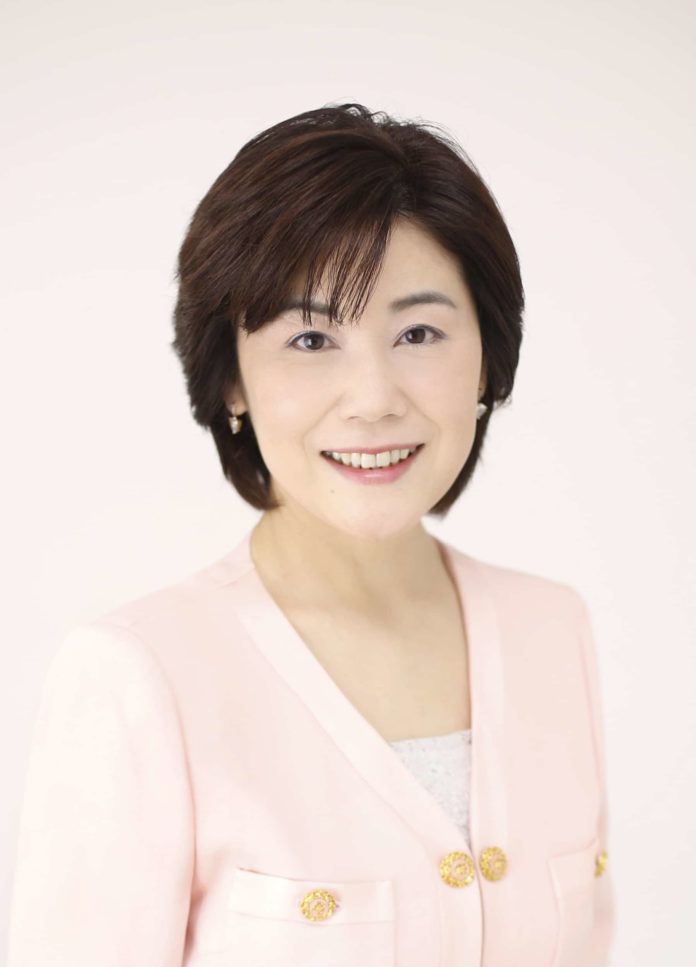On the occasion of the forthcoming MakeUp in Paris show, and under the aegis of the Japanese group Nippon Shikizai, two workshops will be organized by the Japanese association "CareMake", which since its creation in 2010 by Ms Kaho Oishi, has been developing a method enabling blind people to apply make-up on their own. The first workshop will take place on June 20 at 4 p.m., and the second on June 21 at 3 p.m.
An update from Tsuyoshi Hasuo, President of Nippon Shikizai France and Thépenier Pharma & Cosmetics.
Tsuyoshi Hasuo: As a professional beautician, Ms. Oishi had been researching make-up for the elderly and the mobility-impaired since 2009. In the course of her work, she met visually impaired women who had developed a complex because they couldn't apply their own make-up. This prompted Ms. Oishi to look for a solution that would provide them with auditory information on the color of their make-up and the final result.
By letting beauticians apply their make-up and informing them about their gradual beauty enhancement, the type of accessories used for make-up and the color variations obtained, these visually-impaired women seemed to enjoy their transformation into beautiful women thanks to the oral indications provided.
They also seemed to have regained their self-confidence after hearing the admiring comments usually reserved for beautiful women, such as "magnificent", "superb" or "resplendent". This encouraged them to stop staying at home. Despite its success, this approach had its limits: while their make-up was impeccable immediately after application by the beauticians, the latter were of course unable to help them during the day with any touch-ups. Indeed, everyone knows that make-up doesn't stay in place during the day: lipstick fades with meals, make-up can't withstand the effects of perspiration, and it can be altered by rain and wind. Ms. Oishi sought to fundamentally change the way make-up was applied. She found it essential that these women should be able to apply their make-up themselves, rather than relying on others, because this approach could help their personal development.
But to do this, it was necessary to develop a particular method of applying make-up?
Tsuyoshi Hasuo: Back in 2010, Ms. Oishi developed a set of make-up techniques, a prototype for "blind make-up", a technique enabling visually impaired women to apply make-up to their faces without using a mirror. She set out to create a set of rational, effective make-up techniques, with the main aim of course being the end result, i.e. natural, well-balanced make-up. This research led to the creation of a 10-step routine for complete face make-up: liquid foundation, powder foundation, eyelash curler, mascara, lipstick, eye shadow, eyeliner, eyebrow powder, blush and complexion enhancers. These different steps made it possible to achieve "blind" make-up, thanks to a well-organized and effective application of products without the use of a mirror. There are two effective make-up techniques: one aims to shorten the time spent on make-up, while the second, called "natural make-up", seeks to enhance facial features. What makes these two techniques unique is the fact that powder foundation is placed directly on the fingers and then smoothed with the fingertips until the product is evenly distributed on each finger, then applied to the parts of the face on which make-up will be applied. This make-up application is completed by placing the fingers of the left hand on the left side of the face and the fingers of the right hand on the other side, then rubbing each side using symmetrical movements, speed and pressure. Symmetrical use of each finger helps to shorten make-up time.
If you want to apply lipstick, first place it on the tips of your pinkie fingers, then apply it to your lips. Starting from the center of the upper lip, the red is applied outwards, to the right and left, then from the corners of the lip to the center for the lower lip. To master this gesture, 10 to 20 hours of training are required.
The method has developed a lot in Japan?
Tsuyoshi Hasuo: To date, Mrs. Oishi has taught the method to around 200 visually impaired women nationwide, including in Tokyo and cities in Aichi Prefecture. The association also certifies trainers and offers practical training workshops. In January this year, for example, 10 people - mainly volunteers helping the visually impaired - were certified as trainers. The organization also aims to promote the method abroad.
At the end of 2016, there were around 340,000 visually impaired people in Japan. In many cases, it turned out that visually impaired women were reluctant to go out because they couldn't apply make-up properly.
During these two sessions, Ms. Oishi will come in person to MakeUp in Paris to explain her method.




